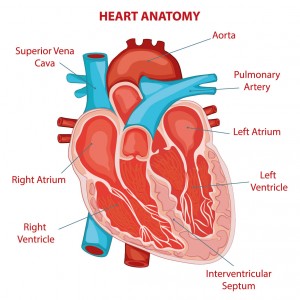 A study published in the Asian Journal of Surgery revealed that a specific surgical technique based on thoracotomy can be successfully applied in cases of atrial septal defect as an alternative procedure to sternotomy. The study was led by researchers at the University of Cukurova in Turkey and is entitled “Comparison between minimal right vertical infra-axillary thoracotomy and standard median sternotomy for repair of atrial septal defects.”
A study published in the Asian Journal of Surgery revealed that a specific surgical technique based on thoracotomy can be successfully applied in cases of atrial septal defect as an alternative procedure to sternotomy. The study was led by researchers at the University of Cukurova in Turkey and is entitled “Comparison between minimal right vertical infra-axillary thoracotomy and standard median sternotomy for repair of atrial septal defects.”
An atrial septal defect corresponds to a congenital heart defect in which blood can flow between the two atria (upper chambers) of the heart due to an abnormal opening in the septum wall between them. This defect can result in a spectrum of symptoms from no symptoms (if the defect is small) to difficulties in breathing, pulmonary hypertension, palpitations, arrhythmias and overload of the right-side of the heart.
Atrial septal defect can be solved surgically by standard median sternotomy, usually with excellent outcomes. A sternotomy is a surgical incision made in the thorax along the sternum that provides access to the thoracic cavity, namely the heart. Negative cosmetic and psychological effects have, however, been reported especially among children and adolescents regarding the incision scars of the procedure. Several alternative techniques have been developed and in recent years, a safe, minimally invasive and aesthetic technique — minimal right vertical infra-axillar thoracotomy (RVIAT) — has been applied to repair atrial septal defects.
The goal of this study was to compare RVIAT to standard median sternotomy in terms of atrial septal defect outcomes. Researchers conducted a retrospective, observational, and case-controlled study between 2007 and 2012, with 47 patients who had undergone atrial septal defect repair in a clinic in Turkey with either standard median sternotomy (26 patients) or RVIAT (21 patients).
Researchers found that the average incision length was shorter for patients who underwent RVIAT. These patients also had less chest tube drainage, less blood transfusions and a shorter postoperative period in mechanical ventilation. In addition, they also returned earlier to their normal daily activities when compared to patients who underwent standard median sternotomy. No statistically significant differences were found between the two procedures regarding aortic cross-clamp time, cardiopulmonary bypass time and total operation time.
The research team concluded that RVIAT is a good alternative to standard median sternotomy for repair of atrial septal defects, exhibiting favorable aesthetic and clinical results.


